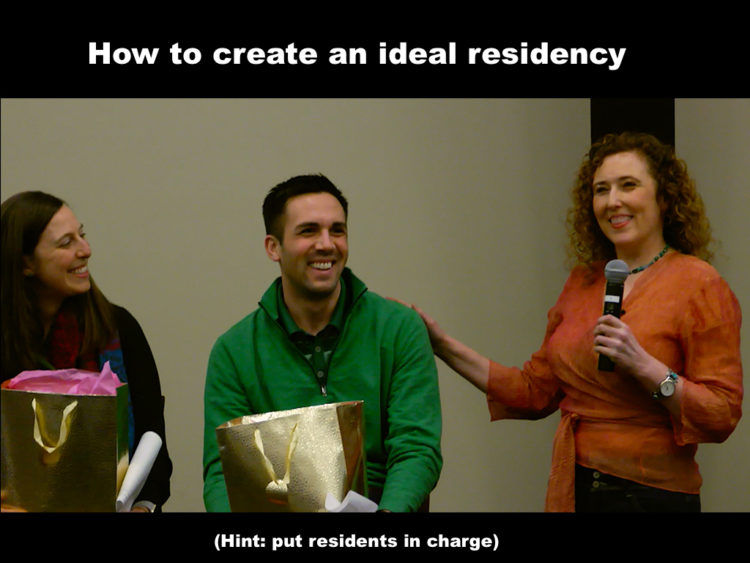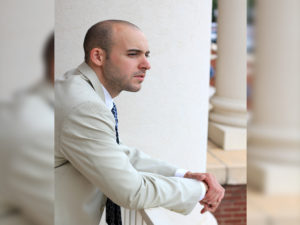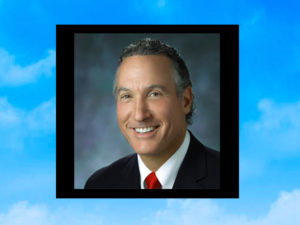
I’m a fan of putting the end-user in charge. It’s an winning strategy all around. As an entrepreneur and community organizer at heart, I love bringing people together to create innovative solutions for their problems. Download MP3 and/or listen here to how it’s done (& how you can use this in your own life):
When I left assembly-line medicine in 2005, I invited my community to create their own ideal medical clinic. I collected 100 pages of testimony, adopted 90% of their feedback, and we opened one month later—with no outside funding. The first ideal clinic designed entirely by patients. Twelve years later we’re still going strong. Plus we’ve never turned anyone away for lack of money. Since opening our community clinic, I’ve helped doctors all over the country open ideal clinics too. Even helped an entire hospital system redesign themselves when I led 13 town hall meetings in 48 hours and collected 2830 pieces of qualitative data from their community. It’s so much fun! You may be thinking ideal clinics & hospitals seem too good to be true. You can do this too. I’ll share my overall strategy (it’s simple!) Grab a copy of my free guide to launching your ideal medical clinic here:
We all know it’s time to revamp medical education. So how do we create an ideal medical school or residency program? Put medical students and residents in charge, of course. Need help? Hey, I’d love to help your residency reinvent itself. I recently challenged 115 residents to design the first ideal residency. To encourage participation, I offered $6000 in cash & prizes. It was like the “Price Is Right” with everyone trampling each other to share their awesome ideas. Play video to see all the docs jumping over each other and piled up underneath me on the floor:
Want an ideal residency? Here’s what to do first:
1) Date night gift cards – Make a great deal with a local romantic restaurant for 50% off a bulk number of meals and then have them create gift cards to cover dinner for two. These gift cards would then be distributed to residents who have met milestones in the program so they could get to know their spouse again after being absent for a month. So simple. Right?
2) Mentorship program – Pair new residents with attendings or upper level residents who can take them under their wings. Zero cost. Lots of goodwill.
3) Mellow morning rounds – What if attendings were less “ramped up” during morning report? Try mellow Mondays. High anxiety just freaks people out and doesn’t improve learning or patient care. (People are already kinda freaked out in the hospital. Why add to the panic?) Experiment with new-and-improved teaching strategies.
4) Midday breaks – Residents would love to have some scheduled time to see the sun or walk their dogs. Possibly a 20-minute break with another resident so they could chat. One doc suggested that he could keep his pager on and just go to the gym for 30 minutes. These breaks would not count against lunch. Resident physicians would like to be able to eat lunch and see the sun on the same day. Seems reasonable.
5) Lunchtime – Protected time for lunch that doesn’t involve lunch didactics so that doctors could have some down time to eat with mindfulness in silence. So they can see afternoon patients with a fresh and relaxed attitude (without hypoglycemia).
6) Vegetarian food – Have a consistent vegetarian option in the cafeteria. That’s so common sense—healthy food in a health facilities like hospitals and clinics. Hey, maybe have a farmer’s market once per week in the hospital parking lot too!
7) Therapy dogs in clinic – Create a program with the local Humane Society to have an adoptable dog in the medical clinic so that doctors and patients could get pet therapy. I bet the dog would end up finding a home too!
8) Personal assistants – Assign one personal assistant for every 5-10 residents to offer household support and run errands during business hours.
9) Scribes or cap patient loads – Scribes would help residents complete chart notes allowing them to see more patients. If scribes are not possible then adjust resident patient loads to be more manageable for the safety of all involved. I bet this would reduce medical mistakes and malpractice claims too! What a winning idea.
10) Onsite childcare – One psychiatry resident shared that in her first two months of residency she only saw her daughter for six hours. We all know the deleterious impact of maternal (and paternal) deprivation. Children really do need to see their parents more than six hours per month. Right?
11) Treehouse conference room – Maybe hold conferences outside or in some non-fluorescent less hospital-type location. I bet you would be the most popular residency in the country!
12) Leave work early – In the rare chance that residents complete work early, allow them to go home. Residents are happy to keep their pagers on if something comes up. Holding them hostage in clinic when their work is complete serves no purpose other than frustrating the trapped doctor.
13) Sharing a smile – Smiling or laughing at minimum once per day with the attending would improve morale. No cost. Simple strategy. Why not start today?
Many of these seem unbelievably simple and low cost. To achieve an ideal residency will require residents to be proactive and program directors to be open to never-tried-before ideas. Here are a few more tips for success:
How residents can create an ideal residency program:
1) Be actively engaged in improving your residency.
2) Present a complete plan to your program director (see date night example at 15:00 min on video).
3) Review the residency mission and vision statements and conform to their stated values. Use their own language.
4) Start with very simple and low-cost ideas first. Gain some momentum before going for a large overhaul.
5) Engage a champion in administration to help you.
How residency directors can create an ideal residency program:
1) Encourage residents to share their innovative ideas in an “ideal residency” brainstorming session.
2) Be open to new ideas no matter how off-the-wall and weird they may sound to you.
3) Ask residents about their dreams and how you can help them get there.
4) Pair attendings with individual residents for deep mentorship.
5) Avoid fear-based teaching with non-violent communication.
Creating an ideal residency isn’t that difficult. Maybe the ideal residency does have therapy dogs, scribes, onsite childcare, well-fed residents, and kind teachers who smile and laugh. It’s so simple really. We all want the same outcome—well-trained physicians who enjoy practicing medicine and provide great patient care. Love to hear what amazing things you do at your program. Please contact me if you need help.
___
Pamela Wible, M.D., is author of Physician Suicide Letters—Answered. View her TEDMED talk Why doctors kill themselves. Ready to live your dream in medicine? Join our upcoming medical student & physician retreat. For retreat scholarships, contact Dr. Wible.
















We used to have a Burger King franchise in our hospital, and the residents were instrumental in getting rid of it (thanks, cardiology fellows!) Still working on vegetarian options; so far, we have a salad bar with many ingredients soaked in chemicals “to preserve freshness” and steam table wilted watery veggies and sides of mashed potatoes and of course fries. But also a local restaurant, different each day comes in with options like sushi, Indian veggie food, and some soups. Still tough to be vegan, and working on it.